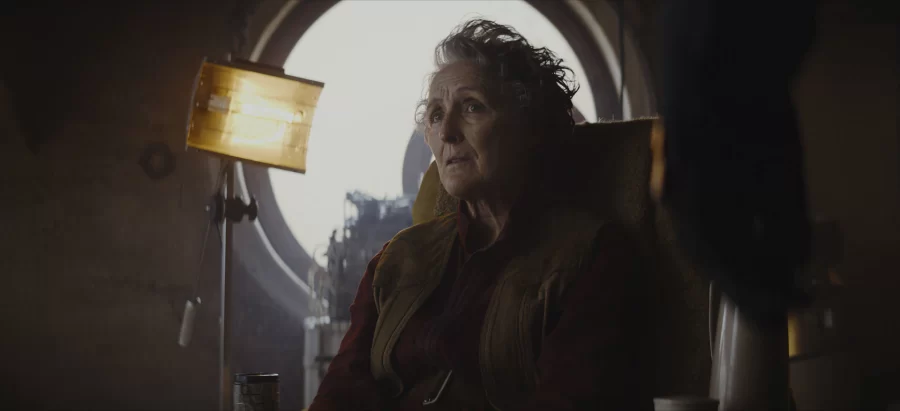With the miniseries “Obi-Wan Kenobi” and “Tales of the Jedi” generating the most excitement for Star Wars shows this year, to say “Andor” was overshadowed by its sister programs on Disney+ is an understatement.
Only after the disappointment of the Obi-Wan show did people realize that what Star Wars needs is not more fan service but rather a fresh plotline with strong writing and characters who have depth.
By combining the darkest tone of any Star Wars show, powerful scripts and high-caliber visual effects, “Andor” is among the best Star Wars serial dramas of the last 15 years, deeply reflective in its themes of seemingly hopeless galactic politics and morally gray actions.
For most of the Star Wars movies, large-scale galactic-stake wars are led by someone with the Skywalker surname –– whether true Skywalkers (Episodes I through VI) or Rey (Episodes VI through IX). Meanwhile, “Andor” flips this on its head.
With no lightsaber duels or even planetary-scale fights (so far), “Andor” draws its strength by remaining grounded in its characters and the daily lives of those living under the oppressive Galactic Empire, masked by Emperor Palpatine’s promise of safety and order from his Declaration of a New Order. And the Empire is a force to be reckoned with in this series.
While fans may be more familiar with the equivalent of a bumbling idiot for an Empire with stormtroopers literally tripping over themselves, unable to shoot anything from point-blank range, the Imperial forces in “Andor” radiate strength. In fact, direct confrontations never occur because the Imperial military would easily dominate their victims. The might of the Empire gives “Andor” the dark tone that allows it to stand out among its sister shows.
The presence of the Empire is enough to deter anyone from even thinking of rebelling. That is, except for Cassian Andor, the character who lends the show its title. By realizing this assumption of uniform conformity, Andor’s tactics of stealing rely on the Empire’s overconfidence.
“You just walk in like you belong,” Andor says. “They’re so fat and satisfied, they can’t imagine … that someone like me would ever get inside their house, walk their floors, spit in their food, take their gear.”This confidence lands Andor a rare piece of Imperial technology worth 40,000 credits (165,000 USD), and ultimately, a path to become a leader of the Rebellion.
Additionally, rather than include overly-dramatic stakes, writer and director Tony Gilroy engages his audience with personal, humanizing plot points. Every character is challenged and developed in a pacing that feels natural. The show isn’t interested in making flashy, jaw-dropping changes to the existing canon. Instead, by keeping the series grounded in the daily lives of those living under the Empire, the stakes of the plot feel more personal, leading the audience to become more invested in the characters.
In addition to the writing, the sets also exude a feeling of spaciousness missing in other modern “Star Wars” shows. This is thanks to the use of traditional blue/green screens and physical sets rather than the digital screens of other contemporary Star Wars series. By doing so, the places characters travel to don’t feel claustrophobic, a common side effect of the virtual sets.
The Star Wars visual effects teams also got to flex its creative muscles with this show. The crowning achievement of the VFX team so far has to be the depiction of The Eye, where Aldhani (the planet the protagonists are on) goes through a crystal belt and meteors burn up in the atmosphere. In the preceding episodes The Eye has a reputation for bringing the coldest of hearts to tears. In the sixth episode the show delivers on that promise. The Eye is mesmerizing with its spectacular hues and sparkling vibrance, a touching moment in the general chaos of the episode. While technical and performative perfection makes for a pristine serial drama, “Andor” goes above and beyond by creating engaging themes of moral ambiguity and the hopelessness of altruistic actions in an indifferent society. The Empire’s retaliation through stricter legislation unmasks the façade of the dictator. Mon Mothma, a senator who secretly backs the rebellion with her paycheck, frequently fights against the Emperor’s legislation. However, the Senate is not receptive to her speeches, with people shouting over her and even leaving the floor, illustrating the ineffectiveness of the remaining democratic bodies of government. The disarray of the government in “Andor” seems to echo many governments in our world. These themes give “Andor” a flavor of meaningfulness that is refreshing and rare in “Star Wars.”
With “Andor” nailing every part of what makes a great TV show, the maturity and tone of the show make it more accessible to older audiences and less to the traditional Star Wars audience. The glimmering effects, personal stakes and powerful underlying themes of “Andor” make the series worth watching. While the progression can feel a little slow (I would recommend watching the first three episodes in one sitting, with a total runtime of just over two hours), the payoffs within each arc, typically composed of three episodes, make it compelling. Additionally, the requirement for background Star Wars knowledge is low, even someone who has only watched the original movie will know what’s going on. Because of this, I would recommend buying a subscription to Disney+ for just a month to watch this series, because if you have the patience to watch three-episode arcs, you’ll definitely enjoy the full extent of this masterpiece.



